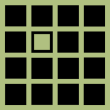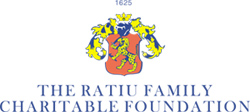UCL School of Slavonic and East European Studies, University College London, 7th Annual International Postgraduate Conference
Inclusion Exclusion
12:00 – 1:30: Panel A3: Borders
Prajakti Kalra (University of Chicago and Centre for the Study of Developing Societies): ‘The (unchanging) border between Uzbekistan and Tajikistan’
The puzzle that is the focal point of this paper is one that relates
to the borders in Central Asia especially between Uzbekistan and
Tajikistan which were imposed by the Soviet Union in the late 1920s.
The question that I am going to tackle in this paper is why doesn’t
Tajikistan enter the rhetoric of President Karimov of Uzbekistan?
Considering the historical and cultural ties shared by the two
countries especially before 1929, and more importantly taking into
account the considerable Uzbek minority population (23% or 1/4th of
Tajikistan’s population) that inhabits Northern Tajikistan along the
border between Tajikistan and Uzbekistan, why doesn’t President Karimov
want to change the borders between the two countries? Why does
President Karimov want to maintain the status quo of the borders that
Uzbekistan and Tajikistan share after the break up of the Soviet Union
in 1991 in the face of military, economic superiority and comparative
political stability? The incorporation of Tajikistan’s Uzbek minority
would be an important move in asserting Uzbekistan’s desire to be a
leader in the region. The answer to my question(s) revolves around two
essential issues, Islam or ‘fundamentalist Islam’ as President Karimov
has labeled it, and the civil war in Tajikistan which carried on from
1992 to 1997. The paper suggests a compelling explanation for what is
going on in Uzbekistan with relation to Tajikistan. Taking President
Karimov as the major player in Uzbekistan and the region, the
explanation offered is speculative and Karimov-centric. It is an
argument that is driven by the interests of the leadership and elites
in Uzbekistan. The leadership of Uzbekistan that is embodied in the
figure of President Karimov is the answer to the puzzle as presented in
this paper. I have used newspaper articles, speeches by Tajik leaders
and exiled Uzbek opposition leaders found in the Central Asian Monitor
Bulletins. In light of the subject being a fairly original question the
answer to the puzzle is partly a literature review of the available
texts on the subject, and part my own analysis of how I read the
goings-on in the region.




